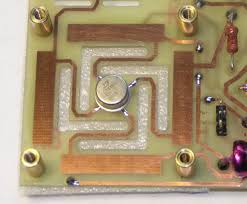Ever since high school, I've been using the same multi-meter. It works well for low voltage purposes, but I'm scared to use it for anything else (high voltage, unless it's a little zap from an electric fence which I think is high voltage) because I purchased it in 1993 or 1994. It sometimes flashes on/off, and loses its display.
I'm doing some shopping for a new one. One feature about my current one is that I always need two hands to touch the wires because it has leads at the end of it. So I'd like a way to keep the multi meter leads on the wire somehow. I also want one that stands up. There are SO MANY different kinds! I'm looking for some electrical engineering advice on why there is such a HUGE range in prices and what I should buy and get my money's worth. Spending up to a few hundred won't be an issue, but I'd like to know if there is a reason to spend that much. If you know about features that clearly give reason to buy a more expensive one, please let me know.
It might also be good to explain when you'd pay more for a multi-meter for low voltage (or low current) situations, or vice versa, during high voltage (or high current) examples?
Some time ago, I also remember reading something where some multi-meters prevent the end user from damaging the device. Say for example, if you have current running through a circuit, and you turn on the Ohm Meter to measure resistance. In the past, I was always told to turn the power off my circuit when measuring resistance in a circuit because it uses the voltage inside the multi-meter itself for the actual voltage when measuring, and it could be damaged if there was current in the circuit when measuring. I've never made the mistake of doing this, but I would think the newer ones (or more expensive ones) would prevent you from damaging the multi-meter if this ever happened. Especially if they need to pass federal electrical regulations, whatever those are. Seems like a trivial thing to prevent when engineering the product.
Sorry for a loaded question, but I'm sure your answer will result found in plenty of Google search results if you have a good answer.

